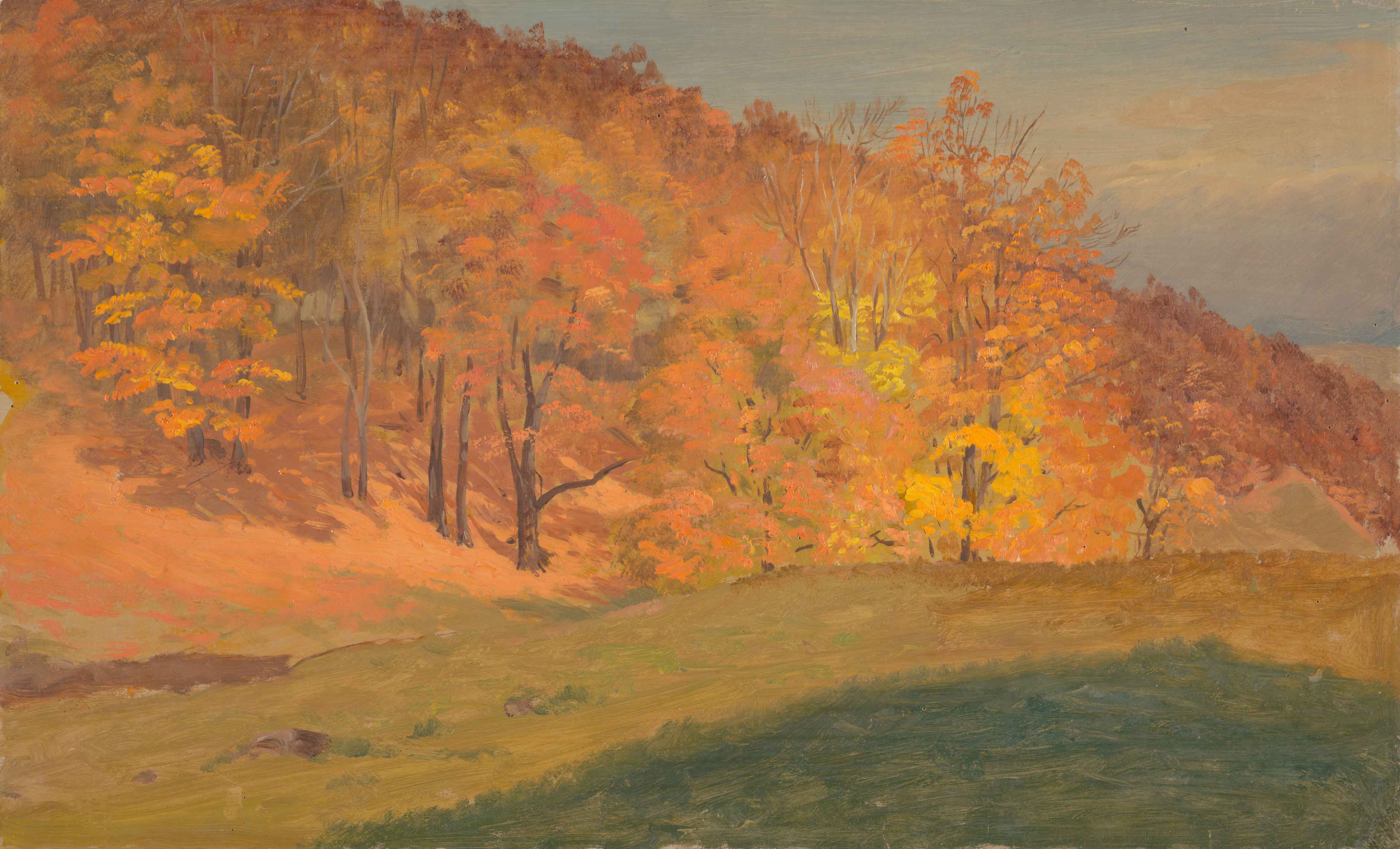Why do leaves change color in the fall?

Frederic Edwin Church, “Autumn Woods,” ca. 1870, Cooper Hewitt, Smithsonian Design Museum, gift of Louis P. Church
Autumnal leaves in vibrant hues are a beautiful part of the season, but those leaves are also a vital part of keeping trees alive.
Trees that have leaves that change color in fall are deciduous. (Evergreen trees with needles, which stay green to continue the photosynthesis process through the winter, are coniferous.) Deciduous trees usually have large, broad leaves.
Most of the year, these leaves are green because of the chlorophyll they use to absorb energy from sunlight during photosynthesis. The leaves convert the energy into sugars to feed the tree.
As the season changes, temperatures drop and days get shorter. Trees get less direct sunlight, and the chlorophyll in the leaves breaks down.
The lack of chlorophyll reveals yellow and orange pigments that were already in the leaves but masked during the warmer months. Darker red leaves are the result of a chemical change: Sugars that can get trapped in the leaves produce new pigments (called anthocyanins) that weren’t part of the leaf in the growing season. Some trees, like oaks and dogwoods, are likely to produce red leaves.

How much and how fast leaves transform varies by location on the globe. The best colors are produced when the weather is dry, sunny and cool. Places that are cloudy, damp or warm won’t see the same degree of changing color.
Then, of course, the leaves fall. Trees start building a protective seal between leaves and their branches as the weather turns. They take in as many nutrients as possible from the leaves, but leaves wouldn’t survive the winter and would make trees vulnerable to damage if they remained. When the leaves are cut off from the fluid in the branches, they separate and drop to the ground.
Learn more about fall tree changes from the Smithsonian Science Education Center, which brings science to K–12 teachers and students.
Leaf through autumnal art from across the Smithsonian.
